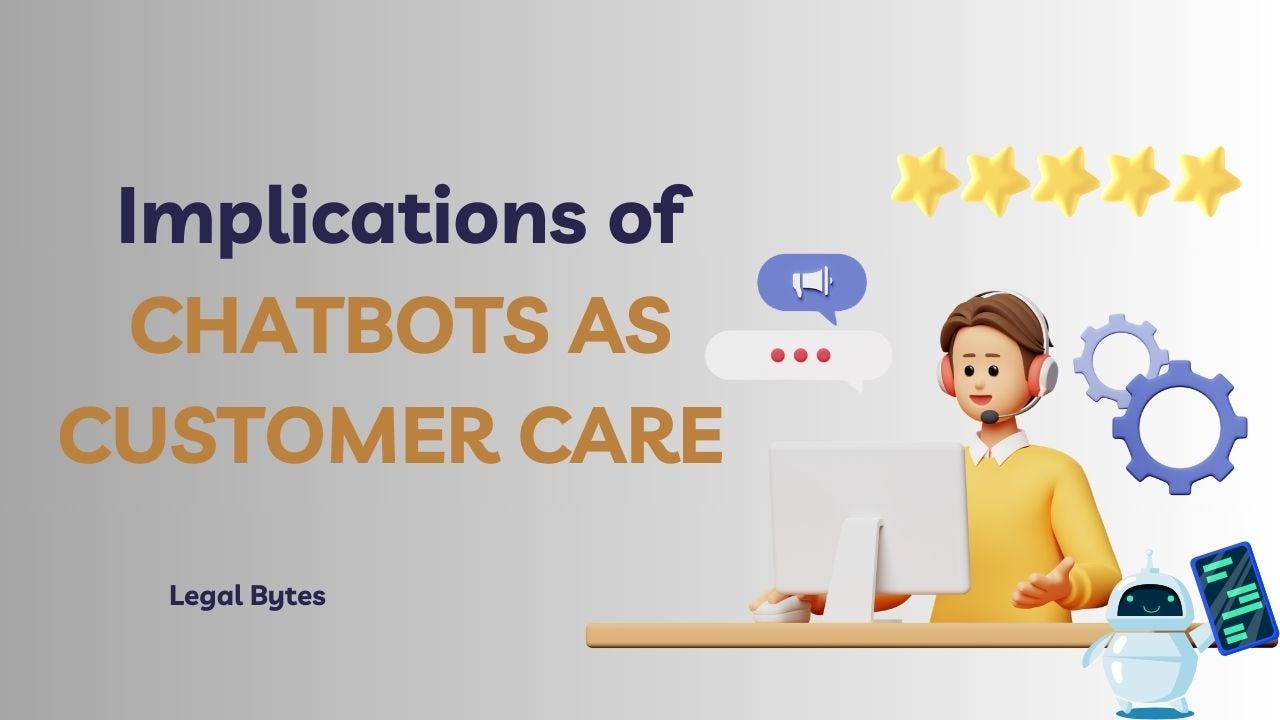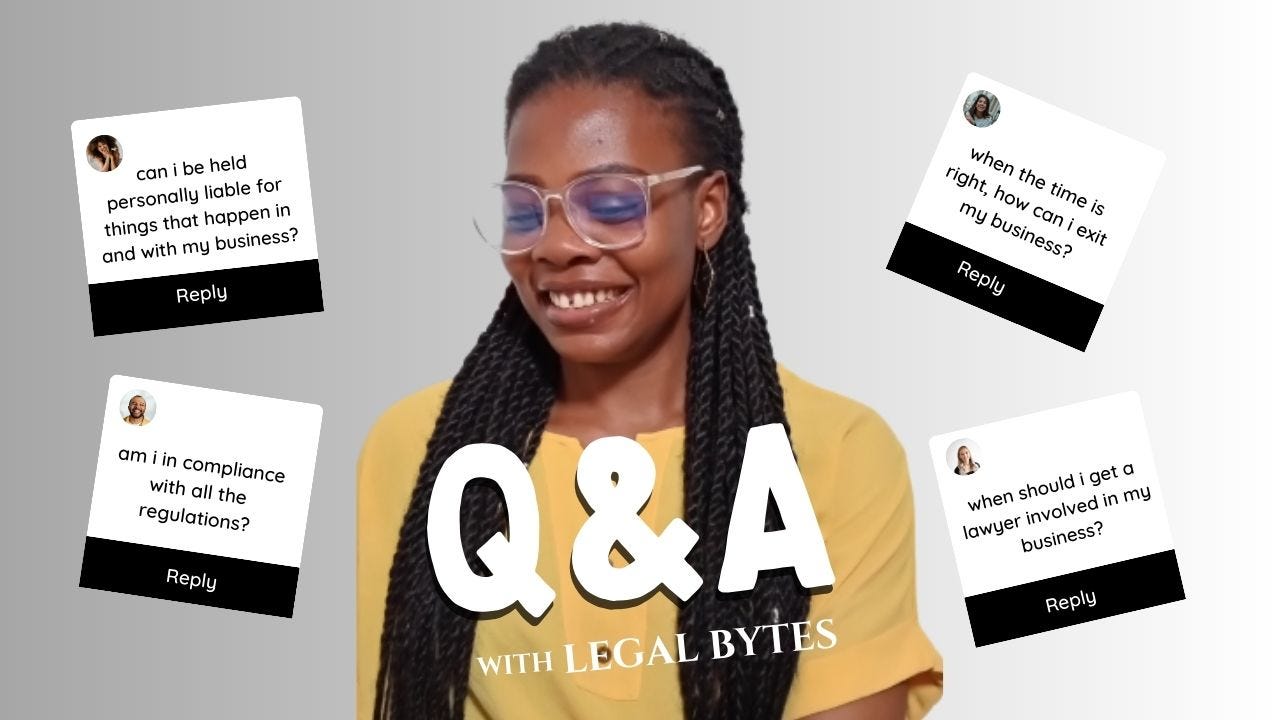CHAT BOTS as CUSTOMER SERVICE: Legal Implications for your Business
A client recently asked me, "What are the legal implications of using chat bots for customer service in my business?" My answer ...
Large language model-based technology like ChatGPT, Google Gemini, etc. are useful in streamlining business activities because they offer human-like assistance with questions, improve customer service efficiencies, and potentially reduce corporate expenditure. Despite these advantages, ethical, legal, and customer satisfaction issues arising from intelligent chatbots are significant concerns.
Introduction to Chatbots in Customer Service
Chatbots as a technological advancement did not begin in the 2020s but decades ago in the 1950s, even though they were merely ideas and toys rather than practical tools. Regardless, it showed the potential for successful human-computer interaction.
By the 1980s, interactive voice response (IVR) systems were integrated into customer service. These IVR systems were not inherently intelligent (as AI is today). They used pre-recorded or synthesized voices to guide users, answer basic queries, and route calls.
The internet era of the 1990s and early 2000s hit and chatterbots were introduced. They were simplistic, rule-driven tools that “learned” through frequent communication with people, the more information they received, the greater their knowledge base.
By the 2010s, the development of natural language processing (NLP), machine learning (ML), and predictive analysis had evolved to the point where chatbots could understand and respond to queries as needed, learn and improve from experience without explicit programming, analyze vast amounts of data, and predict user concerns before they surface even as far as decoding human emotions from interactions, tailoring responses for a more empathetic and personalized support experience.
In the 2020s, generative AI supercharged the chatbots’ potential. Chatbots no longer relied on predefined responses or rule-based systems but produced new content (whether text, voice, or visual) based on prompts.
Today, chatbots are employed by one out of four customer service organizations, especially in the retail and eCommerce industries, to provide personalized and immediate assistance to customers across geographically dispersed markets, increase sales and conversion rates, enhance the shopping experience, gather customer data, etc.
Legal Implications of Using Chatbots
Intelligent Chatbots can generate answers based on uploaded datasets and this can lead to legal issues, like the violation of human rights, data breaches, privacy, and intellectual property violations, and even threaten human life and personal safety.
1. Threats to Personal Safety
Chatbots amass data from prompts, training data, and other information pools. This data often contains personal information like, home address, phone numbers, bank details, medical records, etc. Possession of this data isn’t inherently wrong, however, any unlawful, illegal, or inappropriate use of this information by the chatbots or its controllers can lead to crimes, including cybercrime and cyberbullying, theft, burglary, etc. to which the creators and developers can become liable.
On the other hand, the emotional instability of the person feeding prompts to the chatbots can incite the chatbot or other LLMs to respond with answers that either affirm a negative action or are a health risk to the human prompting it. If the human acts on the advice of the chatbot or LLM, then who is liable or to be blamed?
2. Privacy and Data Protection
It’s established that chatbots and LLMs are fed copious data, both from training sets and active interactions with humans and all this information is stored in their database and accessible whenever called upon. Depending on the prompt, these chatbots can share personal data with the user thus breaching global data protection laws and posing a risk to the confidentiality of the information. On the other hand, this data is also available to and accessible by the software developer, who can retain, use, collect, and share it at will without major repercussions unless the illegality is done on a large enough scale to warrant attention.
Therefore, businesses must ensure that all data is collected and used with the informed consent of the user and that data is handled in compliance with all relevant data protection laws. Businesses must also implement robust cybersecurity measures to safeguard the data from unauthorized access, breaches, and leaks.
3. Intellectual Property
Content Ownership: who will be the copyright owner of the responses generated by the intelligent chatbot through its machine learning algorithms? The answer to this will depend entirely on the legal system.
In the United Kingdom1, the intellectual property laws provide that for computer-generated works that involve no human author, the author and first copyright owner is taken to be ‘the person by whom the arrangements necessary for the creation of the work are undertaken”. This means the human prompter owns the copyright, but the copyright term is reduced to 50 years, and no moral rights apply to the work.
In the United States, works created with substantial AI input are not eligible for copyright protection. The works must be attributable to a human agent. Therefore, the human-made aspects of AI-generated works, such as “prompt instructions”’, are eligible for copyright protection, while output from the intelligent chatbots is not.
In Nigeria, the criteria for any work to qualify as copyright-able is “originality” and a human agent must expend substantial effort when creating the work. More so, copyright-able works must have been authored by a Nigerian citizen, a person domiciled in Nigeria, or a company incorporated in Nigeria, and the work must have been first published in Nigeria. Based on these criteria, AI-generated works (including chatbot responses) are not protected under Nigerian law.
Intellectual Property Infringement: Most jurisdictions stipulate that, for a work to enjoy intellectual property protection, it must be original and originate from a ‘human author’ who has applied some ‘creative spark,’ ‘independent intellectual effort’ or ‘skill and judgment,’ and not be copied from another work. This poses a problem because chatbots generate answers copied from any material it has been trained with and distribution of such responses, without proper credits or in a way that damages the author’s reputation, can infringe the intellectual property of the original author.
4. Unfair Competition Practices
Technology creates an unfair advantage for its wielder, and businesses can use these chatbots to promote their products or services, discredit their competition, generate assets similar to existing intellectual property, and even create fake news or misinformation. The respective commissions will flag unfair competition and consumer protection practices which is detrimental for the business perpetrating the illegality.
5. Transparency and Disclosure
Users should be informed when they are interacting with a chatbot rather than a human agent. Failure to disclose this can lead to trust issues and potential legal repercussions. Chatbots should also be programmed to provide accurate information to avoid misleading users. Any limitations of the chatbot, such as its inability to provide certain advice or perform certain actions, should be communicated to avoid confusion.
6. Liability and Accountability
Chatbots can make errors or provide inaccurate information, leading to customer dissatisfaction or legal disputes. Therefore, it’s important to establish who is liable for such errors — the business, the chatbot provider, or another party. Depending on the industry, chatbots may need to comply with specific policies or regulations, such as those governing financial services, healthcare, or telecommunications because non-compliance can lead to legal penalties.
Best Practices for Legal Compliance
1. Implement Robust Data Protection Policies
Policies such as your End-User Licensing Agreements, Privacy Policies, Terms of Use, etc. should regularly be updated to match legal updates, and clearly articulate how data collected by chatbots will be handled, stored, and shared. These policies must be accessible to users and regular audits of the chatbot’s data handling practices must be conducted to identify and address any potential legal risks.
2. Ensure Transparency and User Awareness
Ensure that users know they are interacting with a chatbot and provide options for escalating the interaction to a human agent if desired, this assures consumers that their rights are not being diminished by automation. Also educate users on the limitations of chatbots and how to use the service effectively, to reduce the likelihood of misunderstandings.
3. Establish Liability Protocols
Develop internal protocols for managing chatbot interactions, including how to handle escalations and resolve disputes. Drafting clear service agreements with chatbot providers that define liability in case of errors or legal issues arising from chatbot interaction is crucial to limit liability.
Conclusion
By understanding the key legal implications of using chatbots as customer care representatives, staying updated on regulatory trends, and implementing best practices, businesses can leverage chatbots effectively while minimizing legal risks.
About Legal Bytes
We are Adune Legal’s weekly Newsletter, which simplifies the Law for Busy Executives, Entrepreneurs, and Tech Enthusiasts interested in the legal aspects of Business, Technology, and Intellectual Property.
We love emails from our readers— reply to this email and let us know your thoughts and suggestions.
WAIT!!!
We're excited to announce that paid subscribers can access
Q&A sessions with Nneoma Grace via chats on Substack.
Detailed Legal Templates and examples to save you time and legal fees
Expert Interviews and Case Studies
Don't miss out on these perks - subscribe today and start enjoying it!
Thanks for reading Legal Bytes
Adune Legal’s Team
P.S. Like Legal Bytes? Please forward us to a friend.
P.P.S. Was this publication forwarded to you? Sign up here & see previous publications.
Section 178 of the UK Copyright Designs and Patents Act (CDPA 1988)





